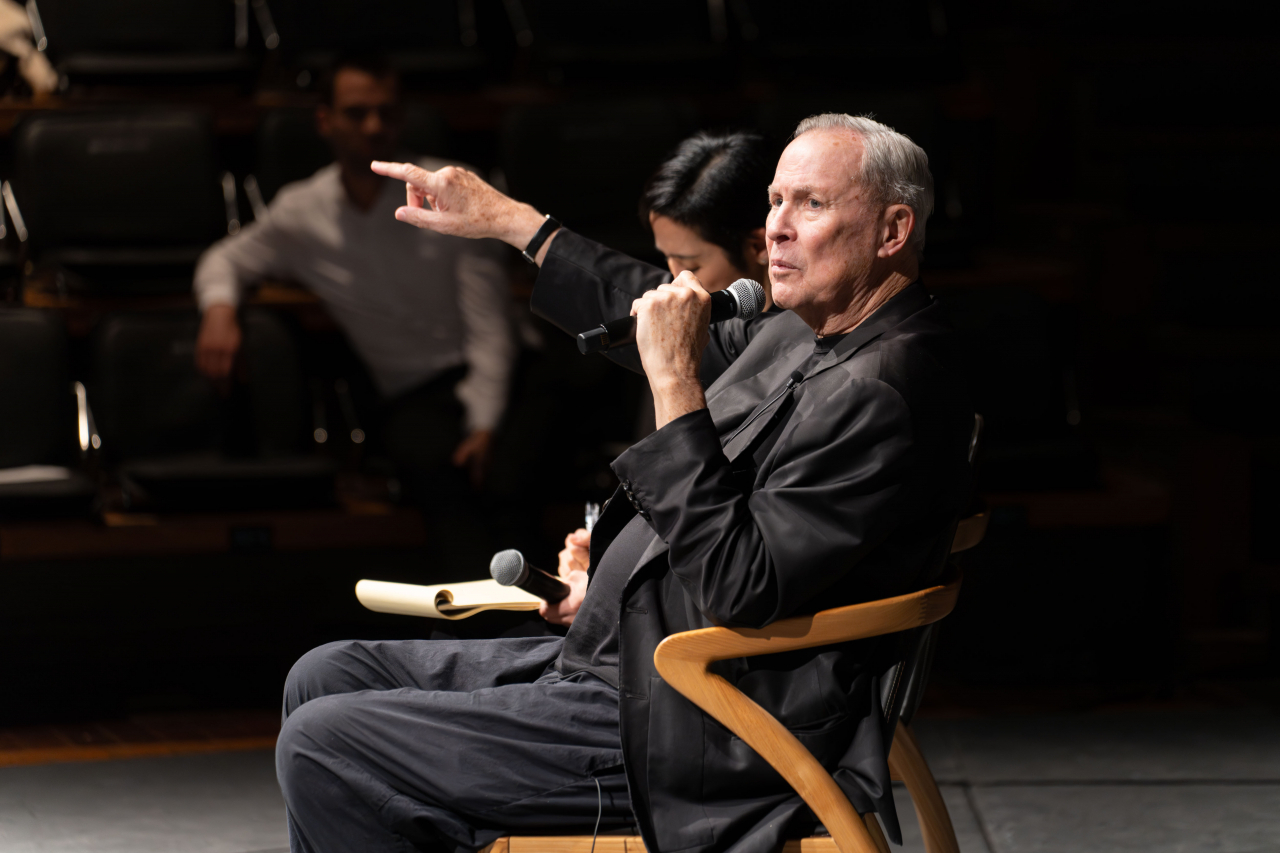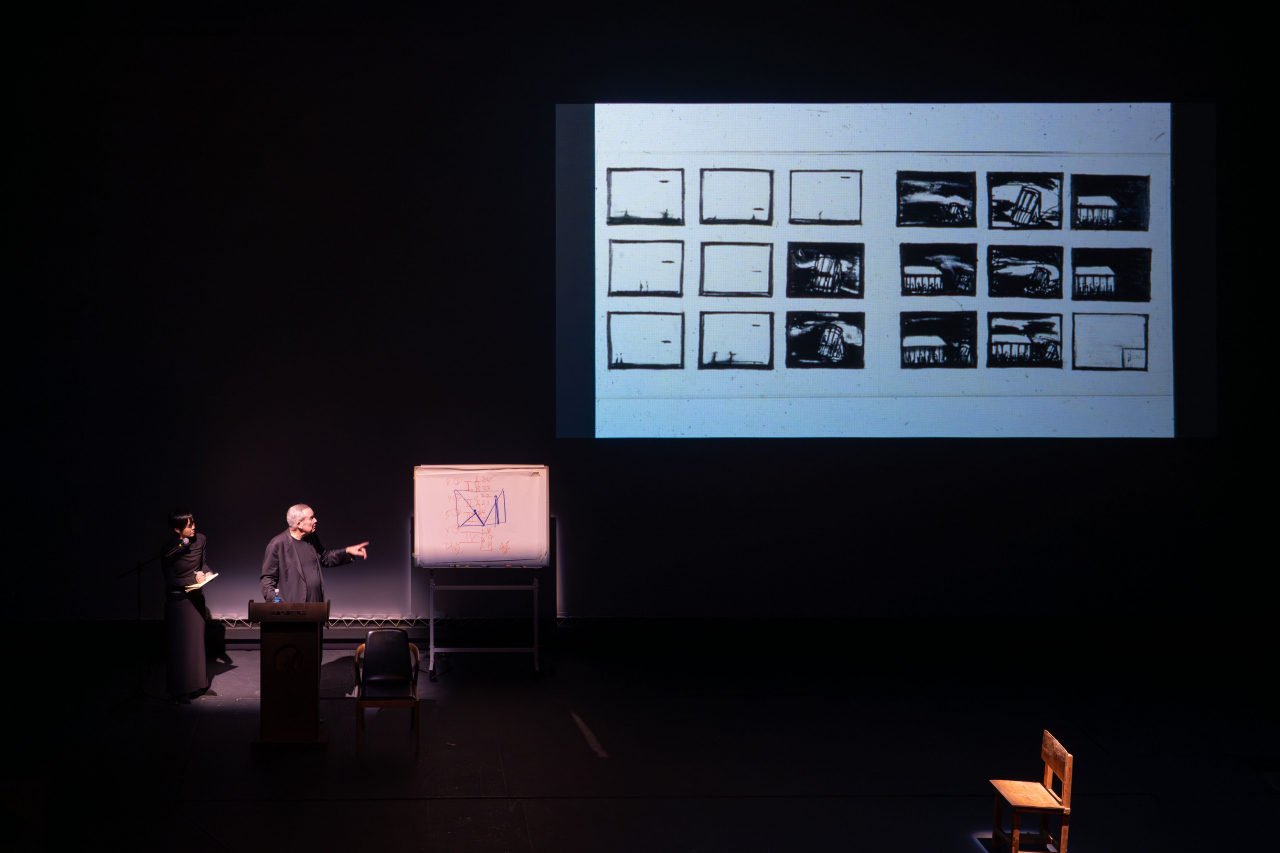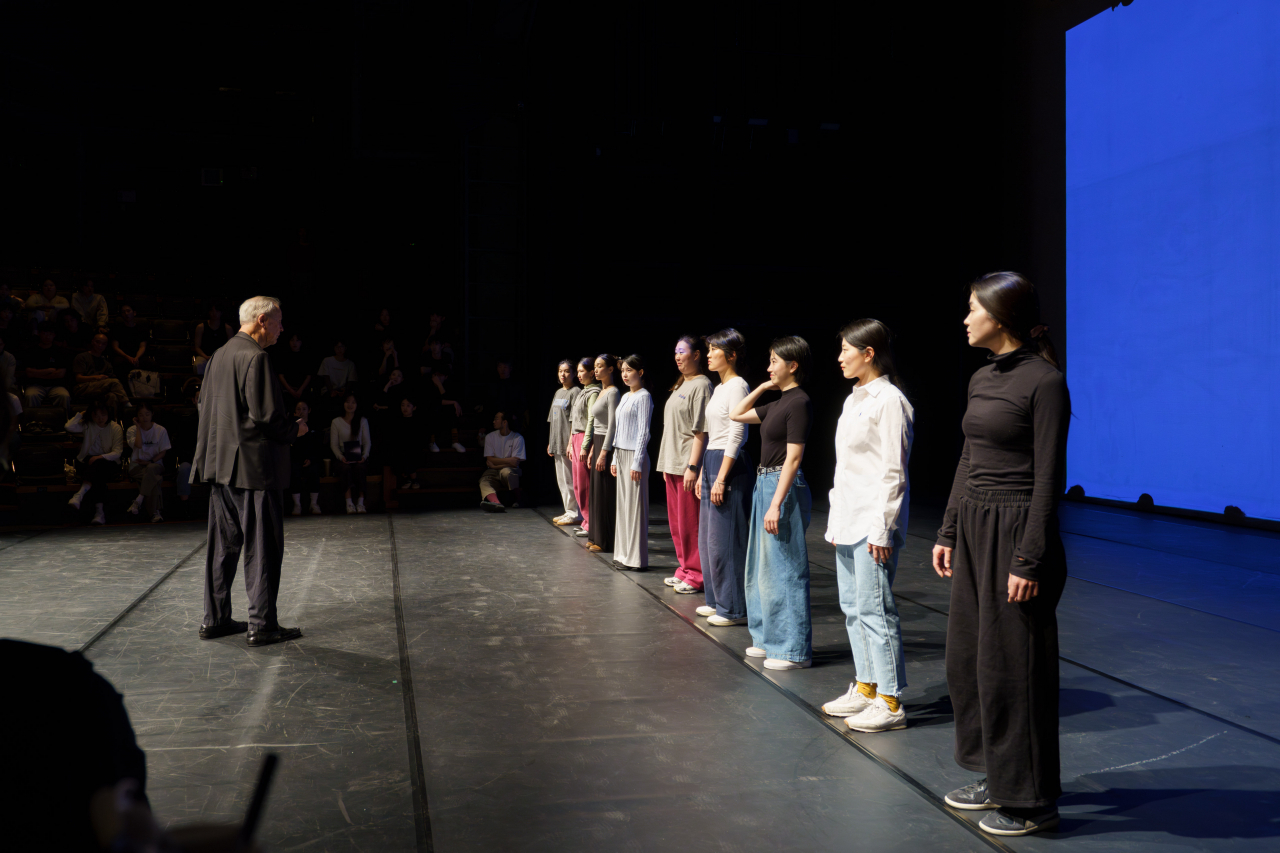 |
Robert Wilson speaks during a talk at the Drama Center in central Seoul on Nov. 22. (Seoul Institute of the Arts) |
The lecture had begun, but the 83-year-old director stood silently at the lectern on the stage in the 500-seat auditorium. He looked straight ahead, occasionally turning his gaze to observe the audience. The weight of the silence filled the space. Only after five full minutes did he finally speak, breaking the tension with a brief greeting. A wave of relief and small laughter rippled through the audience.
Robert Wilson, the legendary avant-garde theater director and one of the most innovative visionaries of the 20th century, has long been celebrated for revolutionizing the performing arts. Works like "Deafman Glance" (1970) and the opera "Einstein on the Beach" (1976) established his reputation for rejecting theatrical conventions and crafting performances rich with symbolic imagery. Earlier this month, his one-woman play starring Isabelle Huppert, "Mary Said What She Said," made its Asian premiere at the Seongnam Arts Center Opera House in Gyeonggi Province.
 |
Robert Wilson speaks during a talk at the Drama Center in central Seoul on Nov. 22. (Seoul Institute of the Arts) |
On Friday, Wilson brought his philosophy to Seoul with a special lecture at the Namsan Arts Center's Drama Center, organized by the Seoul Institute of the Arts. The session embodied Wilson’s belief in the power of silence, a principle he demonstrated through the silent opening of his talk.
“Since the very beginning, I usually stage all of my work in silence first,” Wilson said. “Even if it’s 'Hamlet' or 'King Lear,' I stage it silently first. Your body and presence on stage -- I start with that.”
Wilson advised the young actors in attendance to practice how to stand right.
“In drama classes, almost no time is spent on learning how to stand, but it’s the most difficult thing to do. You learn to stand by standing, just as you learn to walk by walking.”
He encouraged the actors to listen to silence and allow movement to emerge naturally. Quoting American composer John Cage and choreographer Martha Graham, he said, “There’s no such thing as silence because the sequence of sounds we just heard will never happen again. The only constant is change. And there’s no such thing as no movement. Sometimes, when we’re very still, we become more aware of movement than when we’re in motion. As long as you’re living, there is sound.”
Finally, he advised young students "to give audiences time to think" and "not insist on an idea but be full of ideas."
“The reason I work as an artist is to ask questions. That is, to ask, what is it? And not to say what something is. If we know exactly what we’re doing, there’s no reason to do it. The reason to work is to say, 'what is it?'”
 |
Robert Wilson (left) speaks to students and young actors during a workshop at the Drama Center in central Seoul on Nov. 23. (Seoul Institute of the Arts) |
The following day, Wilson conducted an acting workshop for 35 participants, including acting majors from the Seoul Institute of the Arts and young actors from the National Theater Company's Young Artist program.
The workshop began with a complete blackout of the theater. Wilson experimented with different colors, intensities and shades of light, exploring how the interplay of light painted the stage.
He then coached participants on the fundamentals of presence.
“Look straight ahead. Leave space under your arms and chin. Imagine you are a beam of light," said Wilson. "And the beam of light can go to infinity in front of you. And more importantly can go to infinity behind you.”
"It's a balance between tension and relaxation," he added. “Carry a little smile within you. Each of you carries a mystery. No one else should know what that mystery is.”




![[Exclusive] Hyundai Mobis eyes closer ties with BYD](http://res.heraldm.com/phpwas/restmb_idxmake.php?idx=644&simg=/content/image/2024/11/25/20241125050044_0.jpg)
![[Herald Review] 'Gangnam B-Side' combines social realism with masterful suspense, performance](http://res.heraldm.com/phpwas/restmb_idxmake.php?idx=644&simg=/content/image/2024/11/25/20241125050072_0.jpg)

